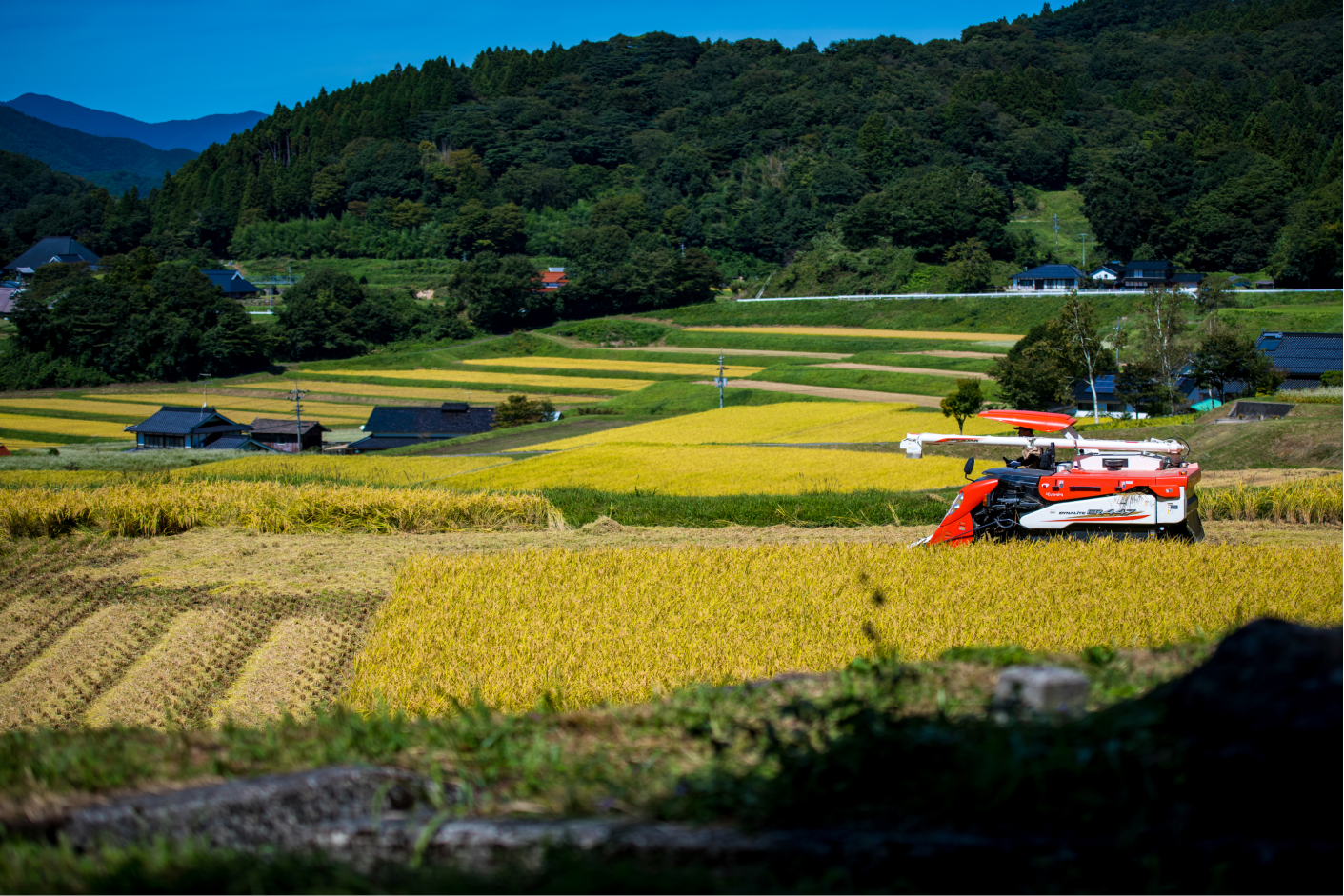
Rice paddies are a major part of people's lives in Satoyama. Rice is grown in the rice fields, and most of the rice is grown by "wet rice cultivation," which is also called paddy farming.
Rice is at the heart of Japan's food culture, and of the 7.7 million tons of rice produced in Japan every year, about 16,300 tons are produced here in Shobara.
Many people say that the rice paddies in Shobara are more beautiful than the rice paddies found in other areas.
Even the "Aze" weeds that grow in the soil dividers between the rice fields are removed by many farmers. This kind of spirit, which is deeply rooted in the local people, is what gives Shobara its neat and beautiful rice field scenery.
The rice paddies present a variety of expressions throughout the four seasons, and each season has its unique charms.
From March to April, the rice fields are tilled, and the soil is prepared for planting rice seedlings.
From the end of April to the beginning of May, the fields are filled with water in preparation for planting rice.
The flooded rice fields reflect the surrounding mountains and sky, creating an open scene.
In early May, "rice planting" takes place, planting seedlings about 15 centimeters long.
Seedlings lined up at regular intervals in the paddies are also a beautiful sight.
Nowadays, many farmers use rice planting machines to plant the rice, but in the past, relatives or local residents would get together and plant the rice by hand.
Rice planting was a core event for the local community. In Shobara, some farmers still plant rice by hand.
Cattle are an inseparable part of Shobara, and in the past, farmers in Shobara treated their cattle like family members and even had a barn inside their house.
In addition to using cattle for everyday farming, a festival called "Ushikuyo Daue" is held once every four years to pray for the souls of the deceased cattle and horses, and to pray for the safety of the cattle and horses in rearing, the fertility of the crops, and the safety of the family.
From June to September, lush green rice spreads all over the area. The sight of the rice fluttering in the breeze and the sound of the leaves swaying is a very pleasant experience.
From late September to October, the rice fields turn golden as the ears bear seeds. The surrounding mountains also begin to change color, and the scenery is as if you are in a completely different world from the spring and summer.
When the rice begins to droop under the weight of the body, the rice is harvested.
After the harvesting, the rice is removed and the straw is hung up in the rice paddies in the shape of a triangular pyramid to be used as fertilizer for the fields and as frost protection during the winter.
This is also one of the sceneries of Satoyama.
INFORMATION
Mitsugaichi Hiwa cho
Koyabara Hiwa cho
Hattori Saijo cho
Onuka Tojo cho